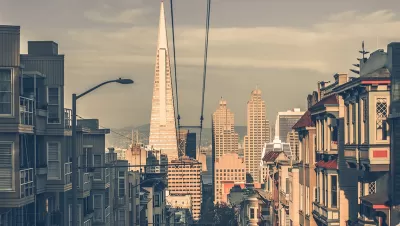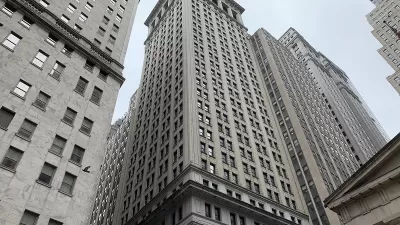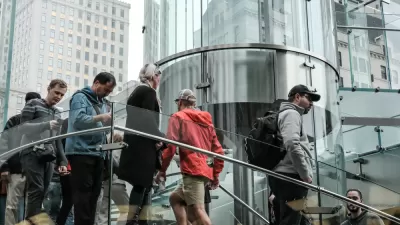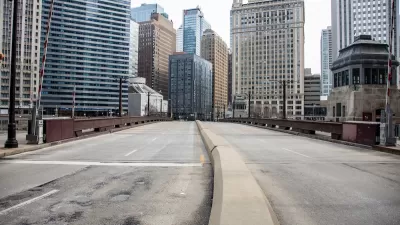A San Francisco nonprofit is developing a set of recommendations for making downtown neighborhoods more flexible and welcoming to a more diverse set of users.

A San Francisco nonprofit is working on a plan to redesign the city's streets to address the changes wrought by the COVID-19 pandemic and find ways to adjust to the post-COVID future, reports Jason Plautz.
The city hopes to revitalize areas that have seen a decline in users as remote work and other changes alter traditional commuting patterns and affect business for restaurants, shops, and other downtown services that historically relied on office workers. Around the country, once-bustling central cities emptied out as office workers shifted to remote work and businesses shuttered. According to Robbie Silver, executive director of Downtown Community Benefit District (CBD), the organization leading this initiative, San Francisco's Financial District "is a prime example of an urban space that suffered in the pandemic."
Downtown CBD has tasked SITELAB urban studio with conducting public outreach and developing a set of recommendations for how the city can make downtown neighborhoods "more inviting and flexible" for a wider variety of users. The article quotes Laura Crescimano, co-founder and principal at SITELAB: "If you look at European downtowns and other cities with vibrant downtowns, they serve more a multi-function, multi-purpose role." Figuring out what those multiple functions are for San Francisco, says Crescimano, is one of the major questions the project seeks to answer.
FULL STORY: Initiative will rethink San Francisco downtown for 'post-COVID' work patterns

Trump Administration Could Effectively End Housing Voucher Program
Federal officials are eyeing major cuts to the Section 8 program that helps millions of low-income households pay rent.

Planetizen Federal Action Tracker
A weekly monitor of how Trump’s orders and actions are impacting planners and planning in America.

Ken Jennings Launches Transit Web Series
The Jeopardy champ wants you to ride public transit.

Rebuilding Smarter: How LA County Is Guiding Fire-Ravaged Communities Toward Resilience
Los Angeles County is leading a coordinated effort to help fire-impacted communities rebuild with resilience by providing recovery resources, promoting fire-wise design, and aligning reconstruction with broader sustainability and climate goals.

When Borders Blur: Regional Collaboration in Action
As regional challenges outgrow city boundaries, “When Borders Blur” explores how cross-jurisdictional collaboration can drive smarter, more resilient urban planning, sharing real-world lessons from thriving partnerships across North America.

Philadelphia Is Expanding its Network of Roundabouts
Roundabouts are widely shown to decrease traffic speed, reduce congestion, and improve efficiency.
Urban Design for Planners 1: Software Tools
This six-course series explores essential urban design concepts using open source software and equips planners with the tools they need to participate fully in the urban design process.
Planning for Universal Design
Learn the tools for implementing Universal Design in planning regulations.
Ada County Highway District
Clanton & Associates, Inc.
Jessamine County Fiscal Court
Institute for Housing and Urban Development Studies (IHS)
City of Grandview
Harvard GSD Executive Education
Toledo-Lucas County Plan Commissions
Salt Lake City
NYU Wagner Graduate School of Public Service





























